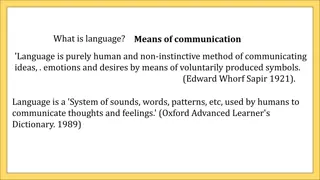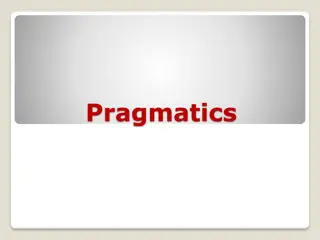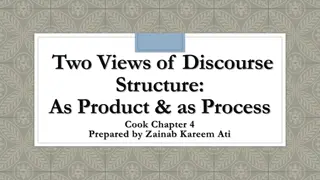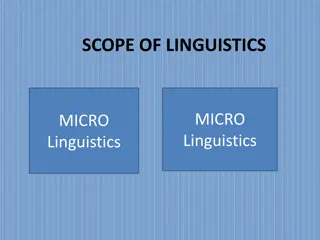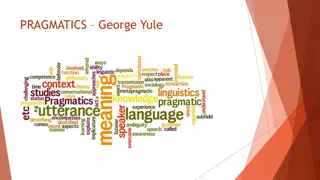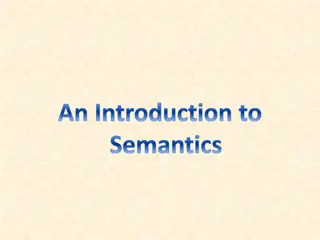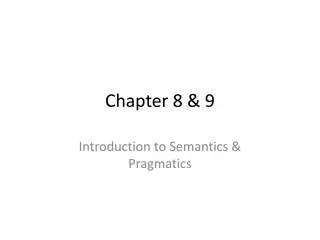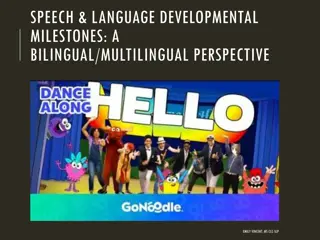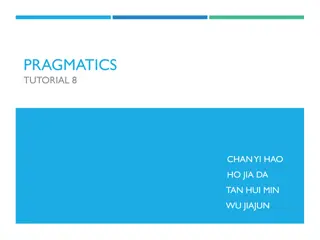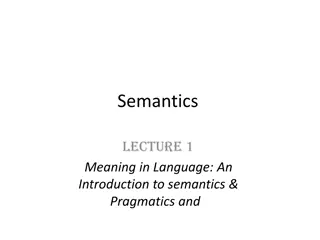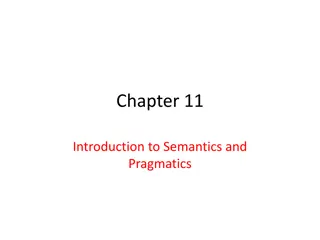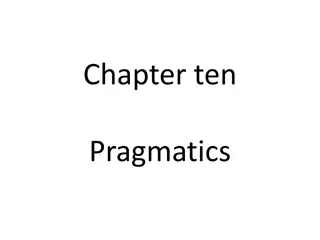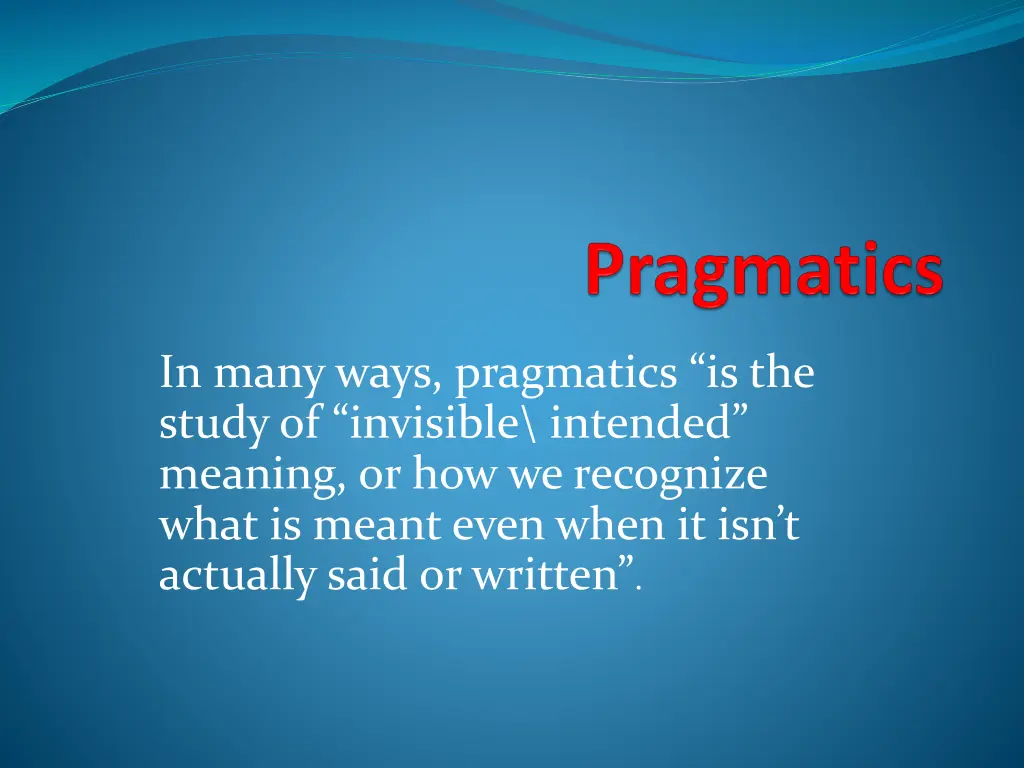
Understanding Pragmatics: Uncovering Invisible Meaning
Explore the fascinating realm of pragmatics, delving into how we decipher implied meanings and intentions even when not explicitly stated through linguistic context, direct and indirect speech acts, and more.
Download Presentation

Please find below an Image/Link to download the presentation.
The content on the website is provided AS IS for your information and personal use only. It may not be sold, licensed, or shared on other websites without obtaining consent from the author. If you encounter any issues during the download, it is possible that the publisher has removed the file from their server.
You are allowed to download the files provided on this website for personal or commercial use, subject to the condition that they are used lawfully. All files are the property of their respective owners.
The content on the website is provided AS IS for your information and personal use only. It may not be sold, licensed, or shared on other websites without obtaining consent from the author.
E N D
Presentation Transcript
In many ways, pragmatics is the study of invisible\ intended meaning, or how we recognize what is meant even when it isn t actually said or written .
3.1 Context There are different kinds of context. One kind is described as linguistic context, also known as co-text. The co-text of a word is the set of other words used in the same phrase or sentence.
For example: the word bank is a single form with more than one meaning. How do we usually know which meaning is intended in a particular sentence? -We normally do so on the basis of linguistic context.
the word bank in a sentence like she has to get to the bank to withdraw some cash , we know from this linguistic context which type of bank is intended.
Moreover, if we see the word BANK on the wall of a building in a city, the physical location will influence our interpretation. In other example the word bank in a river bank refers to an edge of that river.
3.3 Direct and indirect speech acts We usually use certain syntactic structures with the functions listed beside them in the following table. Structures Functions Examples Functions -Did you eat the pizza? Interrogative Question -Eat the pizza (please). Imperative Command (Request) -You ate the pizza. Declarative Statement
When an interrogative structure such as Did you ?, Are they ? or Can we ? is used with the function of a question, it is described as a direct speech act. For example, when we don t know something and we ask someone to provide the information, we usually produce a direct speech act such as Can you ride a bicycle?
Compare that utterance with Can you pass the salt? In this example, we are not really asking a question about someone s ability. In fact, we don t normally use this structure as a question at all. We normally use it to make a request. That is, we are using a syntactic structure associated with the function of a question, but in this case with the function of a request. This is an example of an indirect speech act.
3.4. Politeness In the study of linguistic politeness, the most relevant concept is face.
Your face, in pragmatics, is your public self-image. This (it) is the emotional and social sense of self that everyone has and expects everyone else to recognize.
Politeness can be defined as showing awareness and consideration of another person s face . If you :(to) say something that represents a threat to another person s self-image, that is called a face-threatening act.
For example, if you use a direct speech act to get someone to do something (Give me that paper!), you are behaving as if you have more social power than the other person. If you don t actually have that social power (e.g. you re not a military officer or prison warden), then you are performing a face threatening act.
An indirect speech act, in the form associated with a question (Could you pass me that paper?), removes the assumption of social power. You re only asking if it s possible. This makes your request less threatening to the other person s face. Whenever you (to)say something that lessens the possible threat to another s face, it can be described as a face- saving act.



